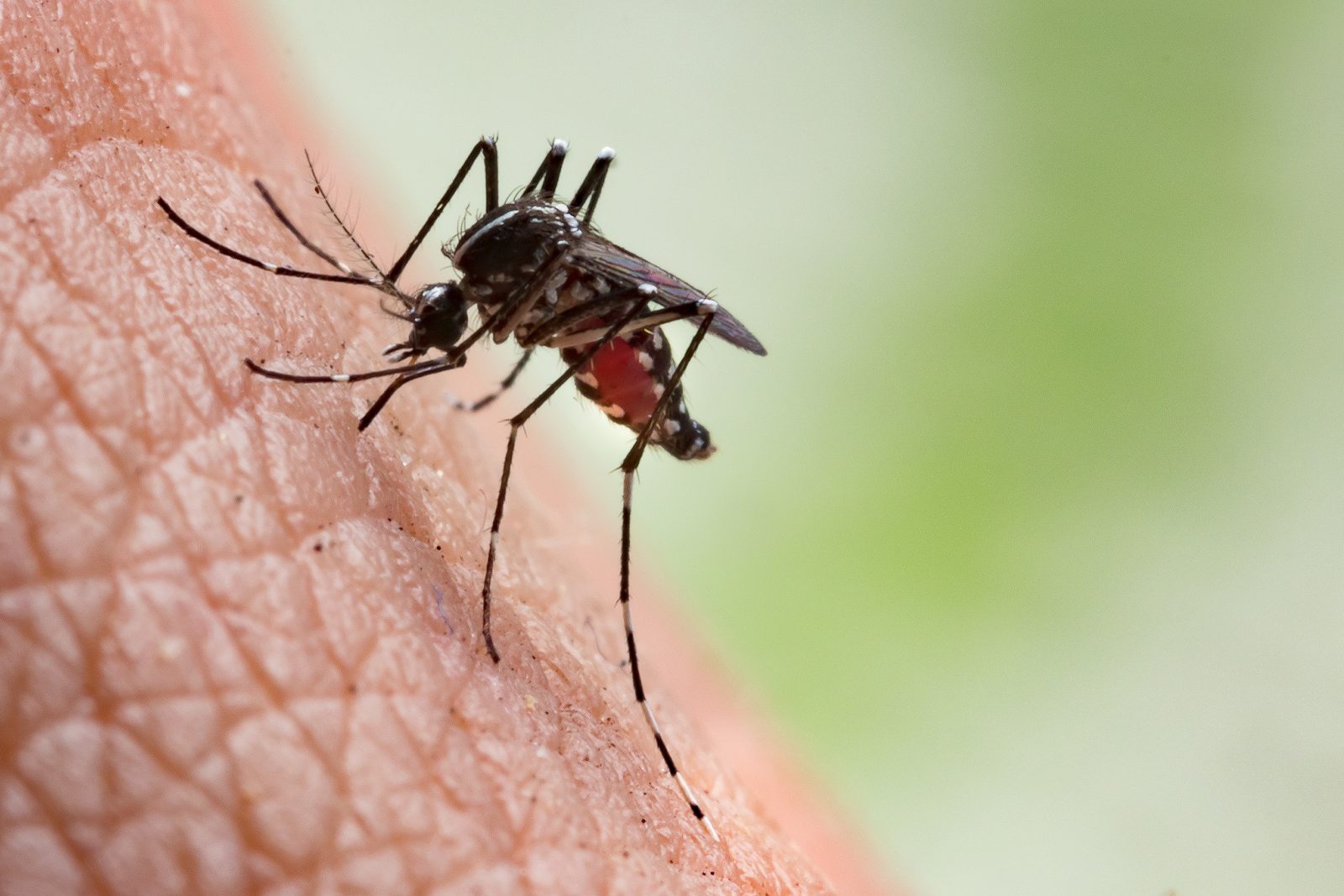 With funding from the Canada Foundation for Innovation (CFI)’s John R. Evans Leaders Fund (JELF), Assistant Professor of Biological Sciences Ian Patterson, Associate Professor of Health Sciences Adam MacNeil and Professor of Biological Sciences Fiona Hunter are creating a specialized lab to study insect-specific viruses. Theirs is one of three projects being supported by the JELF.
With funding from the Canada Foundation for Innovation (CFI)’s John R. Evans Leaders Fund (JELF), Assistant Professor of Biological Sciences Ian Patterson, Associate Professor of Health Sciences Adam MacNeil and Professor of Biological Sciences Fiona Hunter are creating a specialized lab to study insect-specific viruses. Theirs is one of three projects being supported by the JELF.Greater insights into ways the spine and upper body move. A better understanding of how mosquitos transmit viruses. More details of the role chemicals released by cells play in disease development and prevention.
These are goals three Brock University researchers are achieving thanks to sophisticated research infrastructure funded by the Canada Foundation for Innovation (CFI).
Under CFI’s John R. Evans Leaders Fund (JELF), Brock has been granted more than $295,000 for equipment for the three research programs.
“Our researchers are making important discoveries in the areas of human health and disease transmission and prevention,” says Brock University Vice-President, Research Tim Kenyon. “CFI’s investment in cutting-edge, specialized infrastructure is key for these researchers to fully develop the knowledge and insights needed to address challenges such as Zika, cancer and musculoskeletal disorders.”
The CFI funding was part of a larger announcement made Tuesday, Aug. 29 by Canada’s Minister of Employment, Workforce Development and Official Languages Randy Boissonnault, on behalf of François-Philippe Champagne, Minister of Innovation, Science and Industry, and Mark Holland, Minister of Health.
Also include in the Aug. 29 announcement was other federal government funding for Brock, including:
- a $2.5-million Social Sciences and Humanities Research Council of Canada (SSHRC) Partnership Grant
- $965,000 in SSHRC Insight Grants
- the renewal of Associate Professor of Psychology Karen Campbell’s Canada Research Chair in Cognitive Neuroscience of Aging.
- $4.8 million in funding from the Natural Sciences and Engineering Research Council’s Discover/Explore program
Assistant Professor of Kinesiology Shawn Beaudette, who is Director of Brock’s Spine Biomechanics and Neuromuscular Control Laboratory, studies how skeletal movements affect physical performance and risk of injury.
To do this, Beaudette and his team use 3D motion capture technology in which reflective markers are placed on various points of research participants’ bodies. Cameras record the position of these reflective markers to represent human movement and the data is then analyzed to give a three-dimensional view of how the entire body moves.
But the traditional technology restricts the number of people who can be monitored at any given time, which “limits both the scientific and sociological impact of ongoing work,” he says.
To address this issue, he and Associate Professor of Kinesiology Michael Holmes and Associate Professor of Digital Humanities Jason Hawreliak have secured cutting-edge equipment for motion capture.
The new CFI-funded ‘markerless’ system can capture movement without having to put the reflective markers on participants’ bodies, making it easier for large groups to be monitored at once “to aid in the prevention of musculoskeletal disorders while concurrently increasing the representation of underserved populations,” says Beaudette.
Assistant Professor of Biological Sciences Ian Patterson studies how and why arthropods such as mosquitos and ticks transmit viruses that cause Zika, dengue, West Nile and other diseases, and how to prevent the transmission of these viruses.
Specifically, Patterson and his team are investigating how a group of insect-specific viruses called negeviruses can be used to target, and block the growth and transmission of, other viruses found in mosquitoes that are harmful to human health.
With the CFI funding, Patterson, Associate Professor of Health Sciences Adam MacNeil and Professor of Biological Sciences Fiona Hunter have created a ‘virology suite’ of leading-edge equipment in Brock’s Containment Level 3 facility.
“Brock is the only university in Canada carrying out projects that use arthropod-borne viruses, like West Nile virus and Zika virus, in mosquitos,” says Patterson. “Support for this research helps safeguard Canadians against these threats and will train new scientists to work with these viruses.”
Professor of Health Sciences Newman Sze, who is Canada Research Chair in Mechanisms of Health and Disease, studies damage to blood vessels caused by aging as well as excessive intake of dietary salt and sugar, and has developed a new antibody treatment that helps repair damaged blood vessels that cause chronic diseases such as dementia.
Sze’s lab has also been at the forefront of research on extracellular vesicles (EVs), also known as exosomes, for more than 15 years. Exosomes are small particles that carry chemical messages released by cells to communicate with different tissues throughout the body.
He has partnered with Professor of Kinesiology Nota Klentrou and Professor of Health Sciences Litsa Tsiani to investigate how EVs released by muscles during exercise can strengthen the body and potentially prevent cancer and dementia.
“To understand how this process works, we aim to collect blood samples from volunteers who are exercising,” says Sze. “We will then separate the EVs from the samples and analyze the signals contained within them by breaking them open. This process is complex and requires specialized equipment.”
CFI’s John R. Evans Leaders Fund helps institutions recruit and retain outstanding researchers, acquire the tools that enable the innovative work of leading researchers and offer research support that, when combined with support from partner organizations, is highly competitive.








